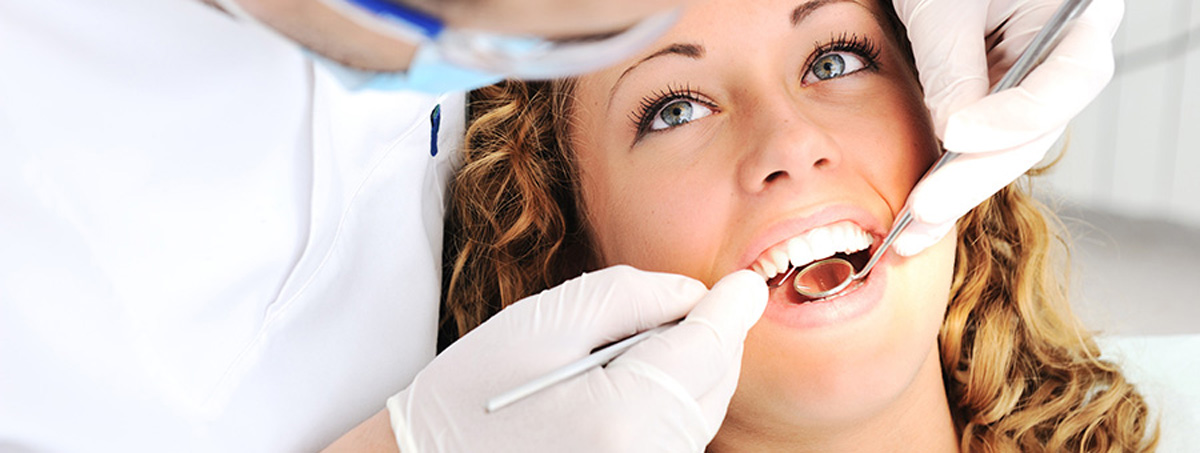
Dental Exams Las Vegas
Las Vegas dental exams are the most important aspect of maintaining your smile. Visiting the dentist twice a year means the doctor can keep a record of your teeth and can catch cavities or gum disease before more serious problems develop. If it has been a while since your last checkup, or if you have never been to the dentist, you may be wondering what to expect from your first visit. When you make your appointment at Downtown Dentistry in Las Vegas for a dental exam, they will walk you through the process.
What To Expect At Your First Dental Exam
New patients who have scheduled their first dental exam will want to arrive 15 minutes early for their appointment to fill out the necessary paperwork. You will present your dental insurance information and will be asked to fill out a medical history form. You may wish to prepare a list of the medications you are taking and any other relevant medical information so that you can fill out the form completely.
Once your forms are complete, a dental hygienist will take you to a dental exam room where he will talk to you. You will go over the medical questionnaire and you may be asked a few more questions about your dental history and whether or not you have experienced pain or discomfort in your mouth. During this initial conversation, patients are encouraged to ask any questions they may have about their visit. Dental exams can be stressful, and it’s the patients right to ask questions and know exactly what will be done during the course of the examination.
Dental X-Rays
Once the hygienist is finished going over your records, it will be time to take x-rays. X-rays are an important part of dental exams and are usually done once a year. These pictures are important for the dentist to get a good look at the inner workings of the teeth and jaw, and spot any problems that may be developing. The hygienist will take several types of x-rays to see all angles of the tissue and bone.
Types of dental x-rays include:
- Bitewing X-rays – These pictures show how your teeth meet when you bite. The hygienist will stick a film between your teeth and ask you to bite down while a quick photo is taken. The pictures will show how well your teeth line up and will allow the dentist to see decay between the teeth, as well as any bone loss or infection that may be present due to gum disease.
- Periapical X-rays – The whole tooth can be examined with these types of photos which shows the crown (the exposed outer part of the tooth that everyone can see) down to the root. Here, the dentist can see if any tumors, cysts, abscesses or impacted teeth are present.
- Occlusal X-rays – It’s important to know what’s happening in the roof of the mouth and the floor of the mouth. The dentist will examine these to see if there are any fractures in the jaw, growths or cysts and can detect teeth that may not have ever broken through the gum line.
- Panoramic X-rays – As the name implies, panoramic x-rays show a broad picture of the mouth including the teeth, jaw, sinuses and jaw joints. The dentist uses panoramic pictures to see if there are any further issues with your bones, or if there are any cysts or growths that the other x-rays did not pick up.
All of these x-rays tell a story about your mouth. The dentist will examine them to find problems, and if there are problems, he will use the x-rays to guide him in developing a proper treatment plan. You will not need all types of x-rays during every dental exam. They are fast and painless, but you should tell the hygienist if you are pregnant and wish to postpone the x-rays until after your baby is born.
Dental Cleaning
When the x-rays are complete, the hygienist will then take a look in your mouth. A quick visual check will allow the hygienist to check for any outward signs or decay or gum disease. If you’ve had tooth pain, this would be the time to point out the specific tooth or teeth that have given you trouble.
The hygienist will then move on to the cleaning portion of the exam. This involves removing plaque and tartar from your teeth using specialized instruments. Some of these instruments are electric and do make noise. If you are nervous, ask the hygienist to show you each instrument ahead of time. Once the teeth are cleaned, the hygienist will floss the teeth and may provide a fluoride treatment. It will then be time to meet the dentist.
Meeting Your Dentist
When Dr. Khorshid arrives, he will have already gone over your medical history and will have looked at your x-rays. If there are areas of decay or infection, he will point them out to you on the pictures so that you can see exactly where and what he is talking about. He will then examine the teeth closely to get a visual look at your mouth.
If there are no problems, he will send you on your way with a clean bill of dental health and you won’t have to come back for six more months. If fillings or other follow-up treatments are necessary, he will explain them to you and give you a timeline for when to return for the procedure. You are free to ask any questions you may have about his recommendations.
